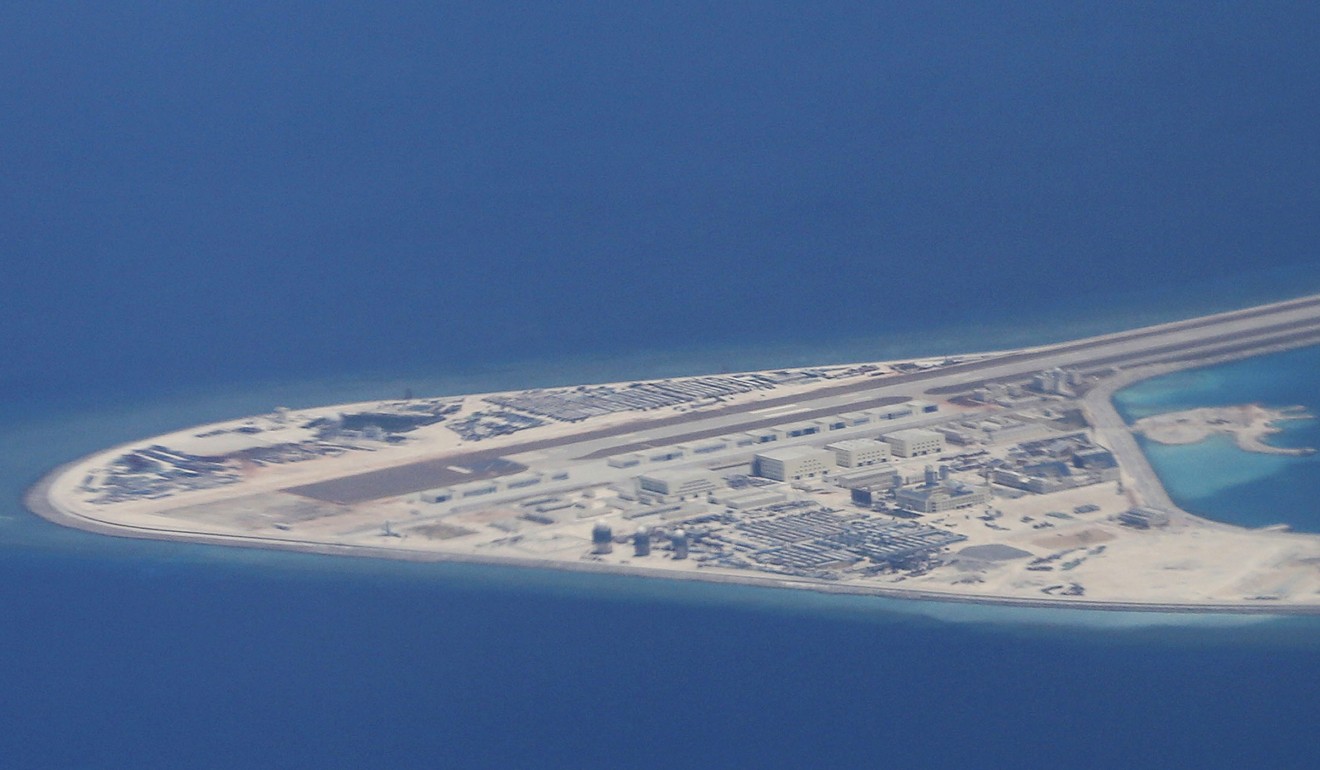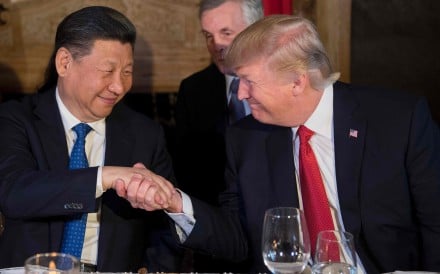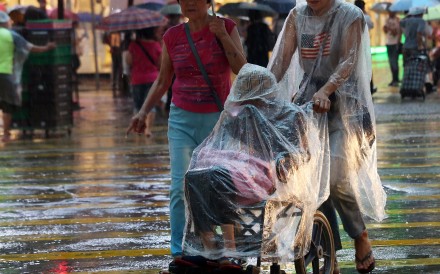Opinion: Asean powers continue to arm-wrestle over China’s nine-dash line and its potential abundance of resources, including the seaweed
Resources greater than those held in US shale deposits will be accessible a decade from now in the South China Seabed, according to some estimates. Collaboration between the economies circling would be economically transformative and cool the ongoing militaristic ardour
PUBLISHED : Sunday, 21 May, 2017, 1:56pm
UPDATED : Sunday, 21 May, 2017, 10:21pm
Down in the weeds, beneath all of the high-level belt and road diplomacy in Beijing on May 14-15, my thoughts were turned to flammable ice and brown laminaria – otherwise known as sea kelp. The obvious connection – the small but sensitive matter of the South China Sea.
Officials from China and the Association of Southeast Asian Nations gathered in remote Guizhou province – where I am sure, 1,000km inland from the Pacific Ocean, there was no evidence either of flammable ice or kelp – to arm-wrestle over the South China Sea.
The claim is that significant progress was made. Officials say they have agreed on a “framework” for a South China Sea code of conduct but they cannot discuss the details in public because consultations are still ongoing and they do not want to attract “interference”.
Whether you trust them or not, the simple fact that no third world war has broken out over the South China Sea since July, when the Hague-based Permanent Court of Arbitration ruled against China that its “nine-dash line” claiming sovereignty over most of the South China Sea had no legal basis, must surely be encouraging.

Given that this is not an issue most of us spend much time thinking about, a brief reprise of the conflict so far, the court ruling and recent developments may be in order.
China and Asean leaders began negotiations to settle differences on the South China Sea almost two decades ago. Those negotiations culminated in the 2002 Declaration of the Conduct of Parties in the South China Sea.
In an honest world where leaders and negotiators all keep their promises, that should have been the end of it. But of course in the world of international affairs, many promises are not kept.
Among them, several of the parties to the agreement – prominently China and Vietnam – went ahead bulking up fragile atolls to make them look more like islands to which they could make territorial claims and then built military facilities on them. The result – rising tensions, simmering conflict and, above all, anxiety over possible expansionist intentions by China.
The Philippines – the country most directly challenged by China’s new assertiveness in the South China Sea – might have tried a flamboyant but ultimately disastrous gunboat approach.
But more intelligently, Rodrigo Duterte’s predecessor Benigno Aquino III chose to take the issue to The Hague’s Permanent Court of Arbitration. The result has been a huge diplomatic coup for the Philippines and the foundations for a possible long-term settlement of the ugly South China Sea conflicts.
In an honest world where leaders and negotiators all keep their promises, that should have been the end of it. But of course in the world of international affairs many promises are not kept
The court ruling – emphatically in the Philippines’ favour – has given the Philippines leverage over China that so small a nation could never expect to wield and undoubtedly played a part in paving a route to last week’s Guiyang meeting.
China has always refused to acknowledge the authority of the Permanent Court of Arbitration and its ruling. From the outset, it argued that the conflicts were integrally linked with conflicting claims of sovereignty, over which the court had no authority.
In strict terms, China was absolutely right. The complaints brought by the Philippines and considered by the court focused exclusively on the rights to resources within the sea areas falling within China’s “nine-dash line”.
However resounding the court’s ruling that China’s claim to historic rights to resources in the South China Sea has no legal basis, the court has no enforcement power (almost none of its rulings over the 118 years of its existence has ever been complied with).
But that did not matter. Beijing likes to be on the right side of International Law and prides itself on observance.
So the court ruling in the Philippines’ favour cut deep, and Duterte’s top officials arrived in Guiyang with the Hague ruling in their back pocket and were using this to exert powerful leverage.
Most important for Beijing was that there was no sniff of US engagement at the Guiyang meeting – a sensitivity that cannot be underestimated.

In the wake of the Hague ruling, a Beijing white paper made this clear: “We firmly insist on maintaining peace and stability in the South China Sea and on directly negotiating for a peaceful resolution on relevant disputes with states that are directly involved.” (my emphasis)
And this brings us back to flammable ice and laminaria. Because at the end of the day, whatever the speculation over geopolitical maritime aspirations, much of this dispute is about access to possible resources.
In the past week, Chinese scientists have told us they have at last mastered technologies that will enable them to capture and use vast methane resources littered across the South China Seabed, trapped by the cold and intense water pressure prevailing in the deep ocean off China’s long continental shelf.
People are talking about gas resources greater than those held in US shale deposits that might be commercially accessible a decade from now.
Clearly, collaboration between the economies circling the South China Sea to exploit these resources would not only be economically transformative, but would do much to cool the militaristic ardour currently dominating the arguments.
Brown sea kelp may not be a deep ocean resource but is a good example of the still-underdeveloped economic potential of our maritime resources.
It is noteworthy that in English, we call kelp seaweed – yes, weed. But in the Chinese and Japanese languages, the word for seaweed is “hai cai”, literally sea vegetables. Therein lies a deep cultural difference in our perception of the value of this critically important maritime resource.
Last year, 26 million tonnes of seaweed were harvested worldwide, worth about US$6 billion. Most of this was commercially cropped, more than half of it from China’s long continental shelf, predominantly off Shandong. It is used for food, as an important source of iodine and supplies the medical and cosmetic industries.
You may not realise it, but the future of this industry rests heavily on international collaboration. Global warming is having a horrible impact on the sex life of seaweeds, which seem unenthusiastic to reproduce if sea temperatures rise above 20 degrees.
So cooperation on the use of maritime resources in the South China Sea might be more important than you think. Discussions in Guiyang last week may have had the headline writers focused on big geopolitical dramas – but there was perhaps more concern about the sex life of seaweed than we imagine.
David Dodwell researches and writes about global, regional and Hong Kong challenges from a Hong Kong point of view





No comments:
Post a Comment